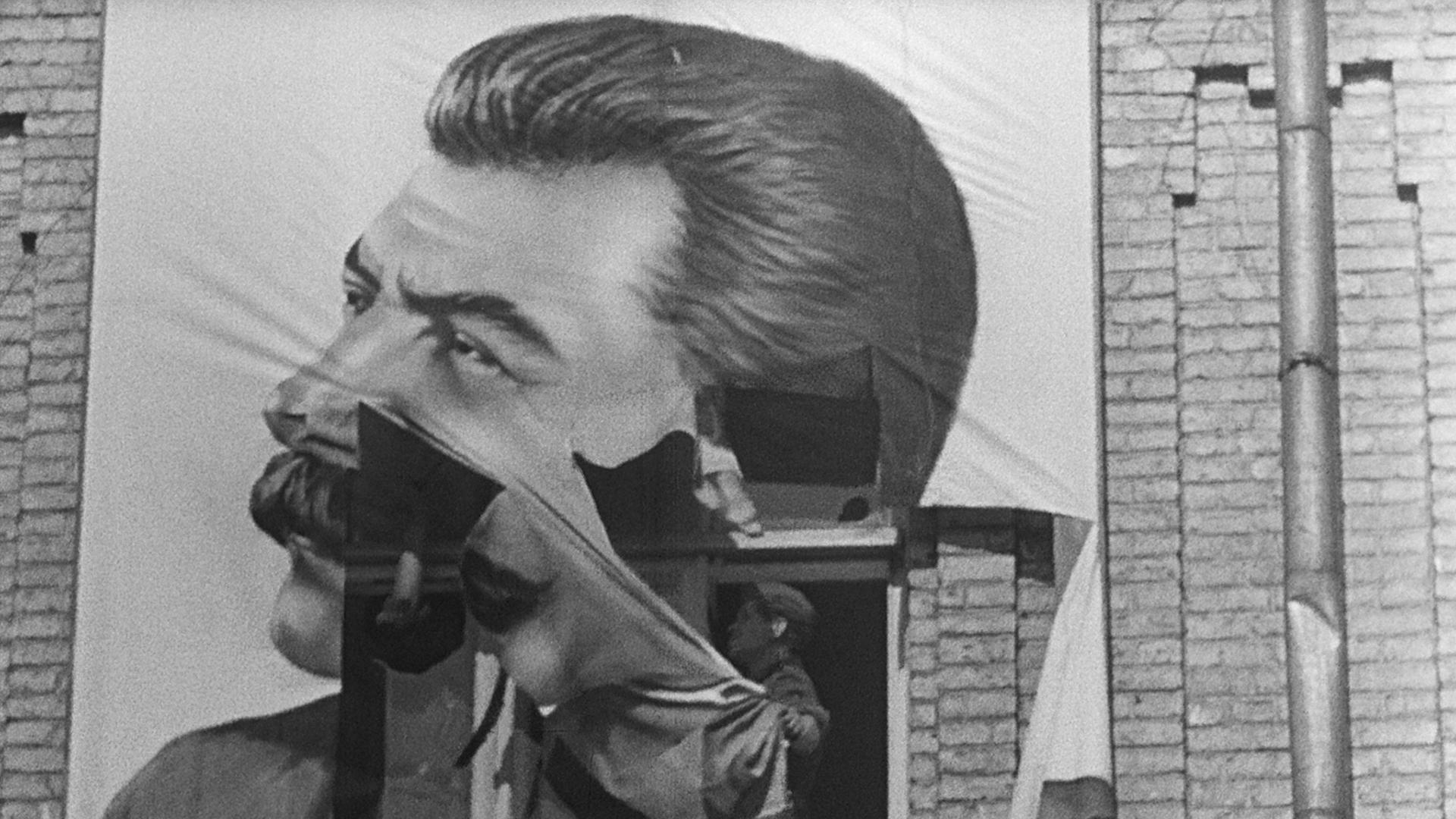
Sotaviihdeteollisuuden tarinoiden, uutisten ja dokumenttien konventioiden keskellä unohtuu helposti, ettei sota ole dynaamista toimintaa. Se ei koostu logistisesti etenevistä hyökkäyksistä, upeista leikkauksista ja rajuista lähikuvista. Siinä ei ole päähenkilöitä, rytmiä, taukoja, juonta eikä tarinan kaarta. Sotatila vallitsee aikansa ja sitten se loppuu.
Ukrainalaisen Sergei Loznitsan uusin teos, kaksituntinen Babi Yar. Context jos mikä todistaa tästä. Elokuva kertoo toisen maailmansodan aikaisesta Ukrainan joukkomurhasta: natsit ampuivat syksyllä 1941 kahden päivän aikana lähes 34 000 juutalaista Babi Yarin rotkossa, lähellä Kiovaa.
Nimensä mukaisesti Loznitsan elokuva asemoi joukkomurhaa yhteyksiinsä. Se ei päästä katsojaa helpolla: mitään ei liikaa selitetä, mikään ei ratkea. Käyttämällä autenttista filmimateriaalia ohjaaja vyöryttää eteemme harmaan ja ahdistavan maiseman, jossa ihmismassoja siirretään suuntaan ja toiseen, ilman helpottavaa musiikkia, välillä ilman ääntäkin.
Joukkoteloitus on elokuvassa läsnä vain muutaman valokuvan ja Vasili Grossmanin vaikuttavan runon muodossa. Teos kuvaakin enemmän aikaa ennen ja jälkeen ampumisten. Paikallisten sympatiat siirtyivät nopeasti uusien vallanpitäjien puolelle, Stalinin kuvat vaihtuivat Hitleriin. Kun saksalaiset valloittivat Kiovan, he aloittivat vainoamiensa kansanosien teloitukset juutalaisista.
Asianmukainen oikeudenkäynti kyllä pidettiin sodan jälkeen, mutta uuden vallanpitäjän määräyksestä kiusallinen rotko täytettiin nopeasti: paikallisten osuutta tapahtumiin ei tahdottu tutkia.
Jaana Semeri
-----------------
The subject here is the WWII genocide of Ukraine’s Jewish population. Editing film and stills from state and public archives in Russia, Germany and Ukraine, some of it never seen before, [Sergei] Loznitsa creates a fascinating and quietly devastating chronicle of invasion, occupation and slaughter. -- The title refers to the Babi Yar ravine outside Kiev where, over two days in September 1941, SS soldiers aided by Ukrainian police shot 33,771 Jews, with no resistance from the local population. Though the addition of the word ‘context’ may seem rather dry and unnecessary, the intention it represents – situating the massacre within the entire period of Nazi occupation – is astute, revealing patterns of movement and behaviour between two oppressors and the citizens caught between them. -- Loznitsa doesn’t go out of his way to make clear what he’s showing, and supposition is sometimes required; his films aren’t delivered on a plate. In this instance, any ambiguity regarding perpetrators, prisoners, victims, simply adds to the sense of a collective loss of humanity.
Demetrios Matheou, Screen Daily
The massacre at Babi Yar needs context, no doubt, and the film has more title cards than most of Loznitsa’s work, but by covering the whole period from the Nazi invasion of Ukraine to the 1950s, he makes the slaughter a piece in a puzzle. -- Babi Yar. Context does as the title says: It gives context, which means it doesn’t strip away the accretions of background and afterlife.
Jay Weissberg, Variety
- Year2021
- Runtime121 minutes
- LanguageUkrainian, Russian, German, Polish
- CountryNetherlands, Ukraine
- RatingK12
- NoteEnglanninkieliset tekstitykset / English subtitles
- DirectorSergei Loznitsa
- ScreenwriterSergei Loznitsa
- ProducerSergei Loznitsa, Maria Choustova
- EditorSergei Loznitsa, Danielius Kokanauskis, Tomasz Wolski
- Sound DesignVladimir Golovnitski
Sotaviihdeteollisuuden tarinoiden, uutisten ja dokumenttien konventioiden keskellä unohtuu helposti, ettei sota ole dynaamista toimintaa. Se ei koostu logistisesti etenevistä hyökkäyksistä, upeista leikkauksista ja rajuista lähikuvista. Siinä ei ole päähenkilöitä, rytmiä, taukoja, juonta eikä tarinan kaarta. Sotatila vallitsee aikansa ja sitten se loppuu.
Ukrainalaisen Sergei Loznitsan uusin teos, kaksituntinen Babi Yar. Context jos mikä todistaa tästä. Elokuva kertoo toisen maailmansodan aikaisesta Ukrainan joukkomurhasta: natsit ampuivat syksyllä 1941 kahden päivän aikana lähes 34 000 juutalaista Babi Yarin rotkossa, lähellä Kiovaa.
Nimensä mukaisesti Loznitsan elokuva asemoi joukkomurhaa yhteyksiinsä. Se ei päästä katsojaa helpolla: mitään ei liikaa selitetä, mikään ei ratkea. Käyttämällä autenttista filmimateriaalia ohjaaja vyöryttää eteemme harmaan ja ahdistavan maiseman, jossa ihmismassoja siirretään suuntaan ja toiseen, ilman helpottavaa musiikkia, välillä ilman ääntäkin.
Joukkoteloitus on elokuvassa läsnä vain muutaman valokuvan ja Vasili Grossmanin vaikuttavan runon muodossa. Teos kuvaakin enemmän aikaa ennen ja jälkeen ampumisten. Paikallisten sympatiat siirtyivät nopeasti uusien vallanpitäjien puolelle, Stalinin kuvat vaihtuivat Hitleriin. Kun saksalaiset valloittivat Kiovan, he aloittivat vainoamiensa kansanosien teloitukset juutalaisista.
Asianmukainen oikeudenkäynti kyllä pidettiin sodan jälkeen, mutta uuden vallanpitäjän määräyksestä kiusallinen rotko täytettiin nopeasti: paikallisten osuutta tapahtumiin ei tahdottu tutkia.
Jaana Semeri
-----------------
The subject here is the WWII genocide of Ukraine’s Jewish population. Editing film and stills from state and public archives in Russia, Germany and Ukraine, some of it never seen before, [Sergei] Loznitsa creates a fascinating and quietly devastating chronicle of invasion, occupation and slaughter. -- The title refers to the Babi Yar ravine outside Kiev where, over two days in September 1941, SS soldiers aided by Ukrainian police shot 33,771 Jews, with no resistance from the local population. Though the addition of the word ‘context’ may seem rather dry and unnecessary, the intention it represents – situating the massacre within the entire period of Nazi occupation – is astute, revealing patterns of movement and behaviour between two oppressors and the citizens caught between them. -- Loznitsa doesn’t go out of his way to make clear what he’s showing, and supposition is sometimes required; his films aren’t delivered on a plate. In this instance, any ambiguity regarding perpetrators, prisoners, victims, simply adds to the sense of a collective loss of humanity.
Demetrios Matheou, Screen Daily
The massacre at Babi Yar needs context, no doubt, and the film has more title cards than most of Loznitsa’s work, but by covering the whole period from the Nazi invasion of Ukraine to the 1950s, he makes the slaughter a piece in a puzzle. -- Babi Yar. Context does as the title says: It gives context, which means it doesn’t strip away the accretions of background and afterlife.
Jay Weissberg, Variety
- Year2021
- Runtime121 minutes
- LanguageUkrainian, Russian, German, Polish
- CountryNetherlands, Ukraine
- RatingK12
- NoteEnglanninkieliset tekstitykset / English subtitles
- DirectorSergei Loznitsa
- ScreenwriterSergei Loznitsa
- ProducerSergei Loznitsa, Maria Choustova
- EditorSergei Loznitsa, Danielius Kokanauskis, Tomasz Wolski
- Sound DesignVladimir Golovnitski
